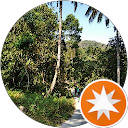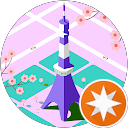Bang Lang Stork Sanctuary: A Bird Lover's Must-Visit in Cần Thơ
The Bang Lang Stork Sanctuary (Vườn Cò Bằng Lăng) offers one of the most remarkable eco-tourism experiences in the Mekong Delta. This vast sanctuary in the Thốt Nốt (Thot Not) District provides a protected home for hundreds of thousands of storks and other bird species, creating a breathtaking natural spectacle, especially at dawn and dusk. We recommend planning your visit carefully to catch the most magnificent display of avian life.
Address: Vườn Cò Bằng Lăng, 7GJ4+J66, Thuận An, Thốt Nốt, Cần Thơ, Vietnam.
I. History and The Storks' Haven
The sanctuary’s origin is unique and entirely spontaneous. It began in 1983 when a local man, Mr. Nguyễn Ngọc Thuyên (Nguyen Ngoc Thuyen), also known as Mr. Bay Cò, noticed a flock of storks nesting in his garden. He loved the birds and, consequently, he protected the area, planting more bamboo and trees to create a better habitat. This dedication led to the area’s gradual expansion, and it formally opened for tourism in 1997.
Biodiversity: Today, the sanctuary spans over 16,000 square meters and shelters an impressive population—sometimes exceeding 300,000 birds—including over 20 different species. You can spot various types of storks such as the White Stork, Little Egret, Cattle Egret, and Painted Stork, along with other birds like herons and ibises.

II. Optimal Viewing and Visitor Experience
Visitors travel to Bang Lang primarily to witness the incredible sight of the storks migrating for the day.
Best Time to Visit: Timing is crucial for the best experience. We suggest arriving early in the morning (around 6:00 AM – 7:00 AM) to watch the flocks of birds depart for their feeding grounds, or coming back late in the afternoon (around 4:30 PM – 5:30 PM) to see thousands of storks return and settle in the bamboo grove for the night.
The Observation Tower: The sanctuary features a multi-story observation tower. Climbing this tower provides a panoramic view of the entire sanctuary, allowing you to capture stunning photographs of the birds in flight and perched among the greenery.
Getting There: The sanctuary is located about 60 km from Cần Thơ City center. Visitors often hire a motorbike or private car for the journey. The route involves passing the Bằng Lăng (Bang Lang) Bridge. In the wet season (usually May to October), the final stretch of the road may flood, and you may need to take a short, enjoyable boat ride to reach the entrance.

III. Essential Visitor Information
The sanctuary operates as an important ecological site, making it essential to respect the natural environment during your visit.
Entrance Fee (Giá vé tham quan): The admission fee is highly reasonable. It typically costs 20,000 VND (Vietnamese Dong) for foreign visitors and adults. Children usually pay a reduced fee of 10,000 VND.
Opening Hours: The sanctuary generally opens from 6:00 AM to 6:00 PM (18:00) daily, ensuring you can access the site during the peak viewing times of sunrise and sunset.
Contact Phone: You can call the local tourism office for the Thốt Nốt District at 0292.3851.293 (or +84 292 3851 293) for further information.
Visitor Tips: Remember to wear light long-sleeved clothing to protect yourself from insects. Consider bringing a hat, since the viewing tower area can experience bird droppings. Bringing your own water will also help, as facilities inside are minimal.




